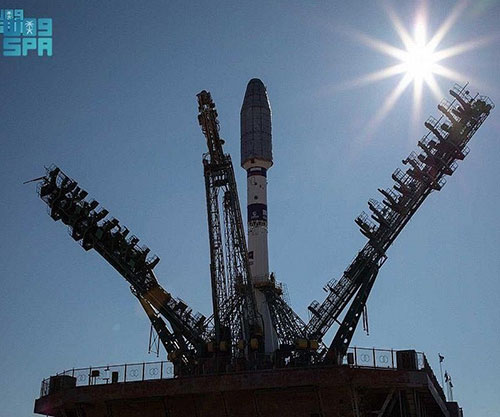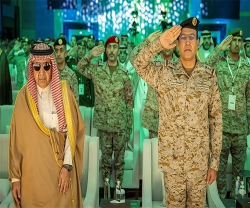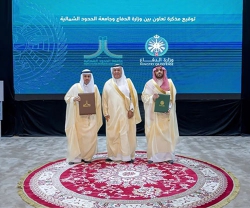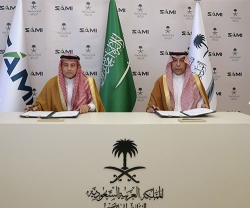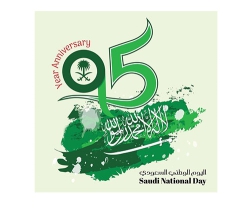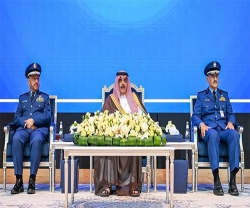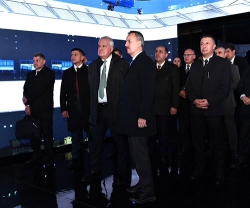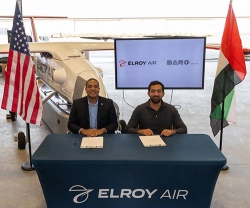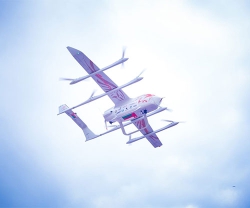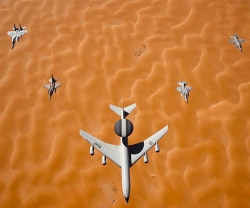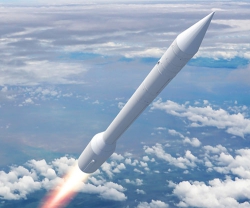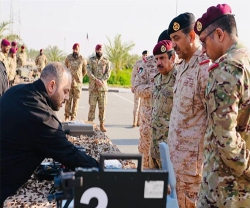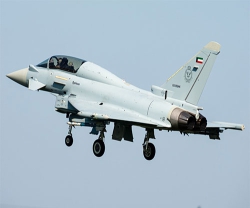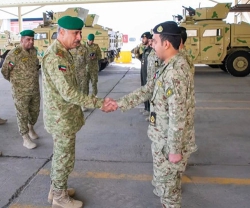Saudi Arabia successfully launched Monday the two satellites Shahin Sat 17, affiliated with Saudi Arabia’s King Abdulaziz City for Science and Technology (KACST) and CubeSate Satellite, affiliated with King Saud University (KSU).
Both satellites were launched from the Baikonur Base in Kazakhstan on board the Russian Soyuz 2 Rocket that already reached its orbit, the Saudi Press Agency (SPA) reported.
The satellite of the King Abdulaziz City for Science and Technology, Shahin Sat 17, is considered a new generation of small size satellites and was allocated for tracking ships from low orbits and also includes a payload of telescope with high definition quality of filming and a payload for tracking marine ships. The satellite enjoys a filming quality that can reach up to 0.9 meter and a weight that does not exceed 75 kilograms with dimensions of 56x56x97 centimeters.
As for the CubeSat Satellite, affiliated with the King Saud University, it is the first satellite to be launched by a Saudi university, and its size is 10*10*10 centimeters and weighs one kilogram. This satellite is an educational project that aims at preparing and training engineering students at the university in the field of designing and programming satellites.
On this occasion, KACST President Dr. Anas bin Faris Al-Faris said in a statement to the Saudi Press Agency (SPA) that this achievement is a result of the great support being accorded to the sector of research, development and innovation in the Kingdom of Saudi Arabia by the Custodian of the Two Holy Mosques King Salman bin Abdulaziz Al Saud and His Royal Highness Prince Mohammed bin Salman bin Abdulaziz, Crown Prince, Deputy Prime Minister and Minister of Defense.
He also indicated that the success of satellite launch comes as a continuation of the successes achieved by the Kingdom in the field of space, as KACST worked to develop and manufacture a group of highly efficient satellites that provide imaging and reconnaissance services, as it launched 17 satellites during the past twenty years.
Dr. Al-Faris added that Shaheen Sat was developed by a Saudi team of various engineering specialties in cooperation with KACST partners. It provides satellite images to government and private sectors to serve the Kingdom's development goals as it also works to track marine vessels by employing artificial intelligence techniques and large data.
He pointed out that KACST will work, in cooperation with the Saudi Space Commission, to invest in technology, develop and manufacture highly efficient satellites in a short period of time.
For his part, the CEO of the Saudi Space Commission Dr. Abdulaziz bin Mohammed Al Al-Sheikh expressed, in a statement to SPA, his happiness with the distinguished step of KACST in the successful launching of Shaheen Sat, indicating that this achievement is a result of the unlimited support of the Custodian of the Two Mosques King Salman bin Abdulaziz Al Saud and HRH Crown Prince, citing the efforts of the Saudi team of engineers and specialists as well as the accumulated experience of KACST.
He also attributed these achievements to the continuation of astronautics that began in 1405 AH, distinct efforts of KACST and the valuable contributions of research centers affiliated to government agencies and universities.
He stressed that such achievements would enable the space sector to achieve the position befitting the Kingdom of Saudi Arabia regionally and internationally at all levels, especially since the space sector is sustainably growing, which makes it an economic and strategic future for all developed countries.
Dr. Al Al-Sheikh further said that KACST represented the Kingdom during the past years, and that the Saudi Space Commission, after receiving the supervision of the sector, continues to work with KACST and other relevant authorities to transfer and localize space technologies in line with the goals of the Kingdom's Vision 2030 in addition to the Commission's goals by taking advantage of the Saudi research and development centers that have great contributions to the sector's growth and its associated services and technologies.

